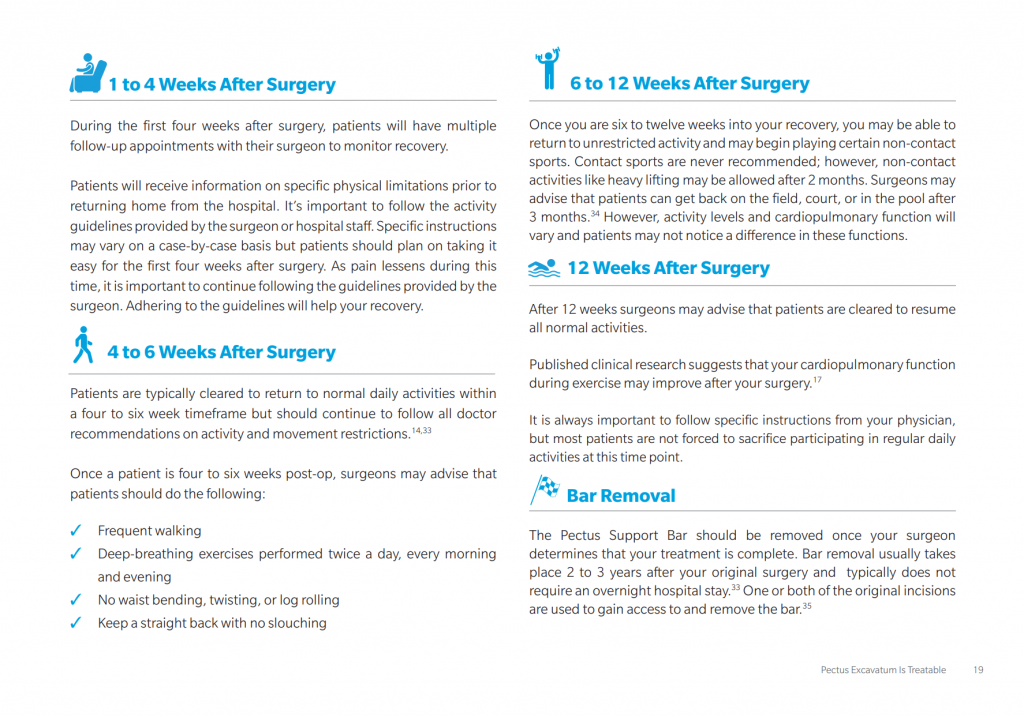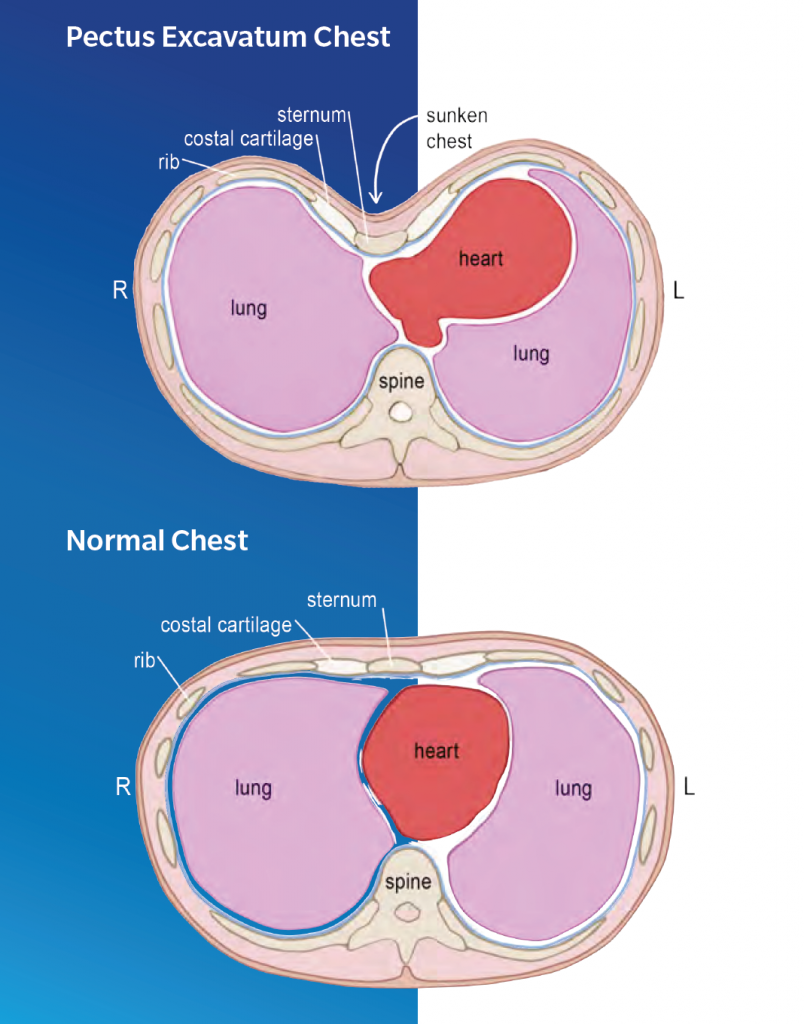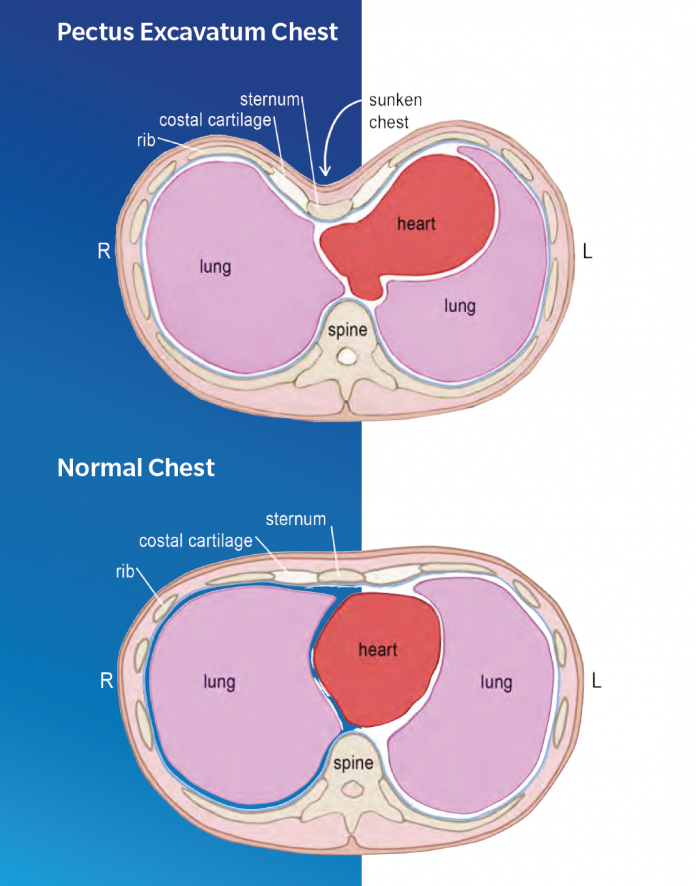| Zimmer Biomet |

Pectus excavatum occurs in approximately 1 out of every 300 to 400 births, making it one of the most common chest wall deformities. Males are three times more likely to have the condition than females.4 The causes of pectus excavatum are not well understood; However, researchers believe that there may be a hereditary link, as well as an association with certain cartilage disorders, such as Marfan Syndrome.5
Healthcare professionals use function tests to evaluate how well (or poorly) certain organs are working within the body. The results of function tests are always compared to a “reference range” which is a range of values that would be observed in healthy people of similar age, sex, race, etc. to the patient. Heart function is evaluated in this way.
Data shows that surgical correction of Pectus Excavatum can improve specific heart function values. This means that:
- The values may be within the reference range when they were not before surgery or
- The values are closer to the reference range than before surgery.
Specific tests to measure heart function:
- Improved “Maximum Cardiac Index” which is a measure of how well the heart performs compared to the size of the patient
- Improved “Stroke Index” which is a measure how efficiently a patient’s heart pumps blood
- Increased “Oxygen Pulse” which is a measure of the amount of oxygen delivered to the bloodstream during each heartbeat while the patient is resting
All of the above measurements contribute to improved heart and lung function. Benefits of improved cardiopulmonary function might include more stamina during exercise, not tiring as quickly, and the ability to participate in sports for a longer period of time than was possible before the corrective procedure.22

This slideshow is especially helpful because it has specific graphics depicting Pectus Excavatum. It shows a simplified halved version of both before, during, and after surgery chest illustrations. The slides also go through the recovery process in weekly chunks while explaining what physical activities are acceptable at each point.
Additional citations:
4. https://www.sciencedirect.com/science/article/pii/S1769721214001025




